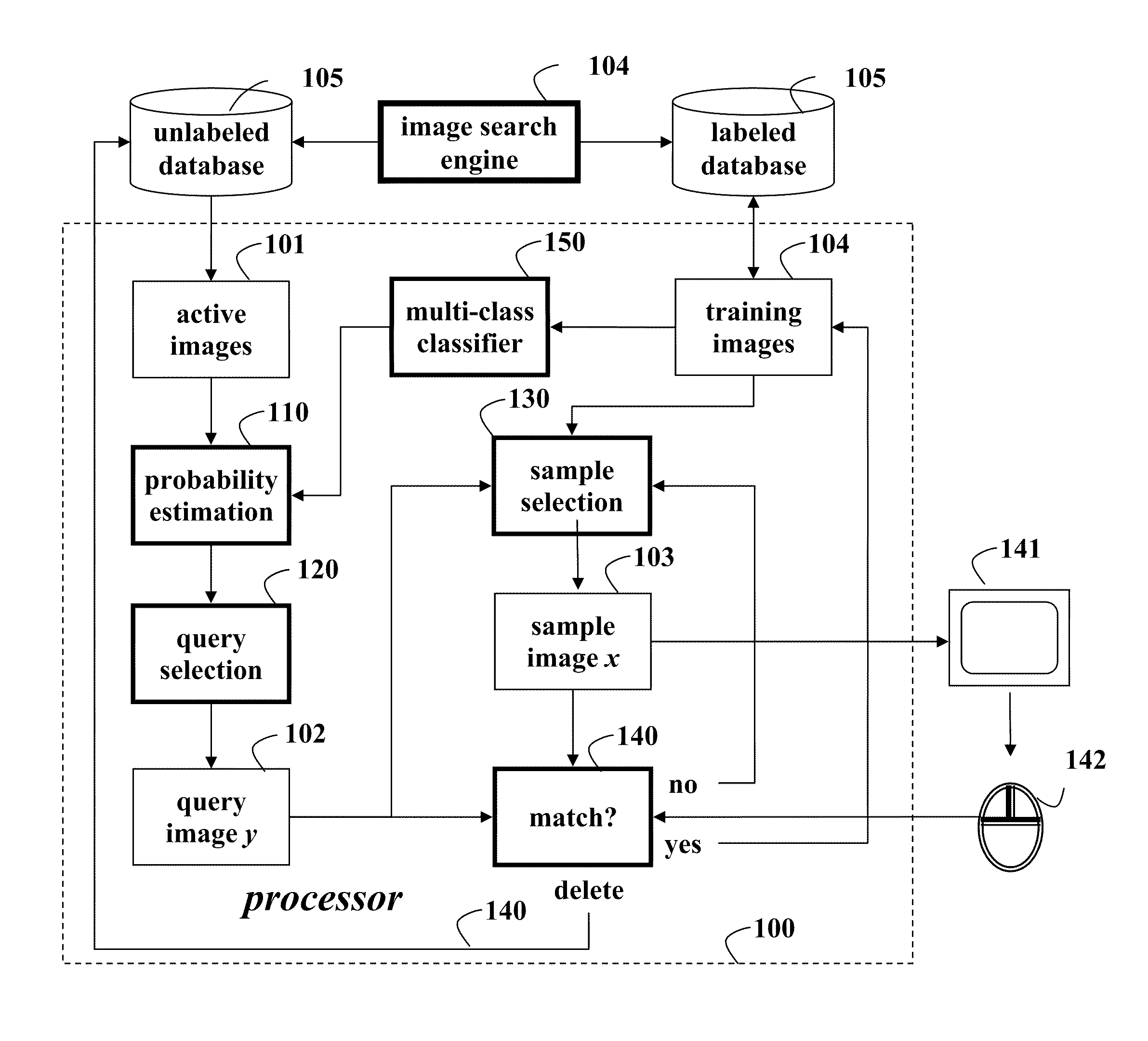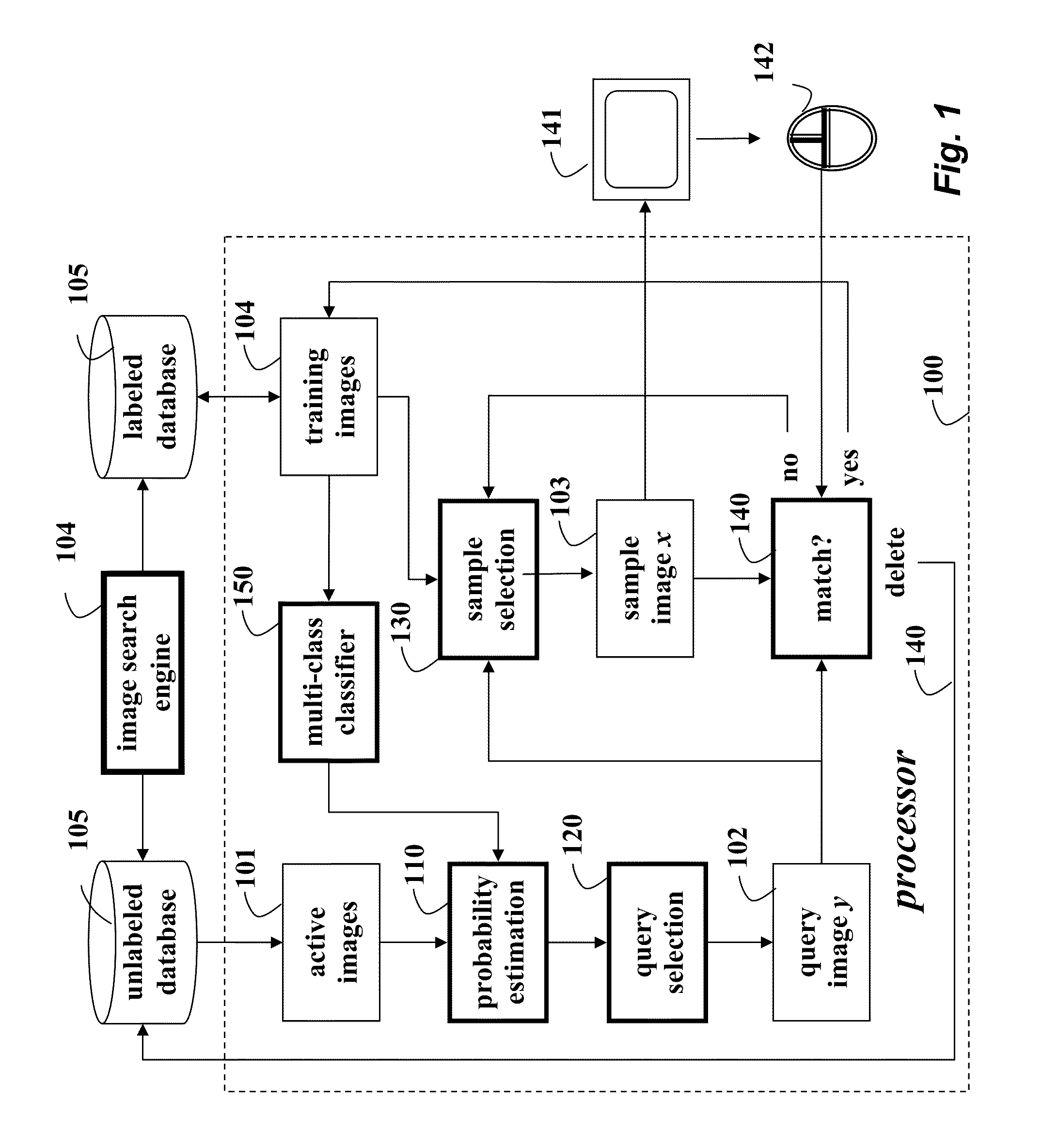Method for Training Multi-Class Classifiers with Active Selection and Binary Feedback
a multi-class classifier and active selection technology, applied in still image data indexing, instruments, computing, etc., can solve the problems of difficult input in this form, laborious, and difficult to intelligently exploit a large number of images, and achieve the effect of less prone to human mistakes and extremely easy to give such inpu
- Summary
- Abstract
- Description
- Claims
- Application Information
AI Technical Summary
Benefits of technology
Problems solved by technology
Method used
Image
Examples
Embodiment Construction
[0017]FIG. 1 shows a method for actively training a multi-class classifier 150 according to embodiments of the invention. FIG. 2 shows the comparable pseudo-code. The method can be performed in a processor 100, including memory, input / output interfaces, as known in the art.
[0018]An active set 101 includes a large number of unlabeled images from which our method selects 120 query images 102 for one or more users to match 140 using output / input devices 141-142. A set of labeled training images 104 is also used to train the multi-class classifier. The training images can be obtained by querying a database 105 of an image search engine 106, or supplied by the user.
[0019]A one-versus-one support vector machines (SVM) is used as the underlying classifier. For the multi-class case, one-vs-one SVM (classifiers trained for each pair of classes) are used.
[0020]In conventional multi-class active training, an unlabeled query image needs to be selected for user labeling. With our method, however...
PUM
 Login to View More
Login to View More Abstract
Description
Claims
Application Information
 Login to View More
Login to View More - R&D
- Intellectual Property
- Life Sciences
- Materials
- Tech Scout
- Unparalleled Data Quality
- Higher Quality Content
- 60% Fewer Hallucinations
Browse by: Latest US Patents, China's latest patents, Technical Efficacy Thesaurus, Application Domain, Technology Topic, Popular Technical Reports.
© 2025 PatSnap. All rights reserved.Legal|Privacy policy|Modern Slavery Act Transparency Statement|Sitemap|About US| Contact US: help@patsnap.com



